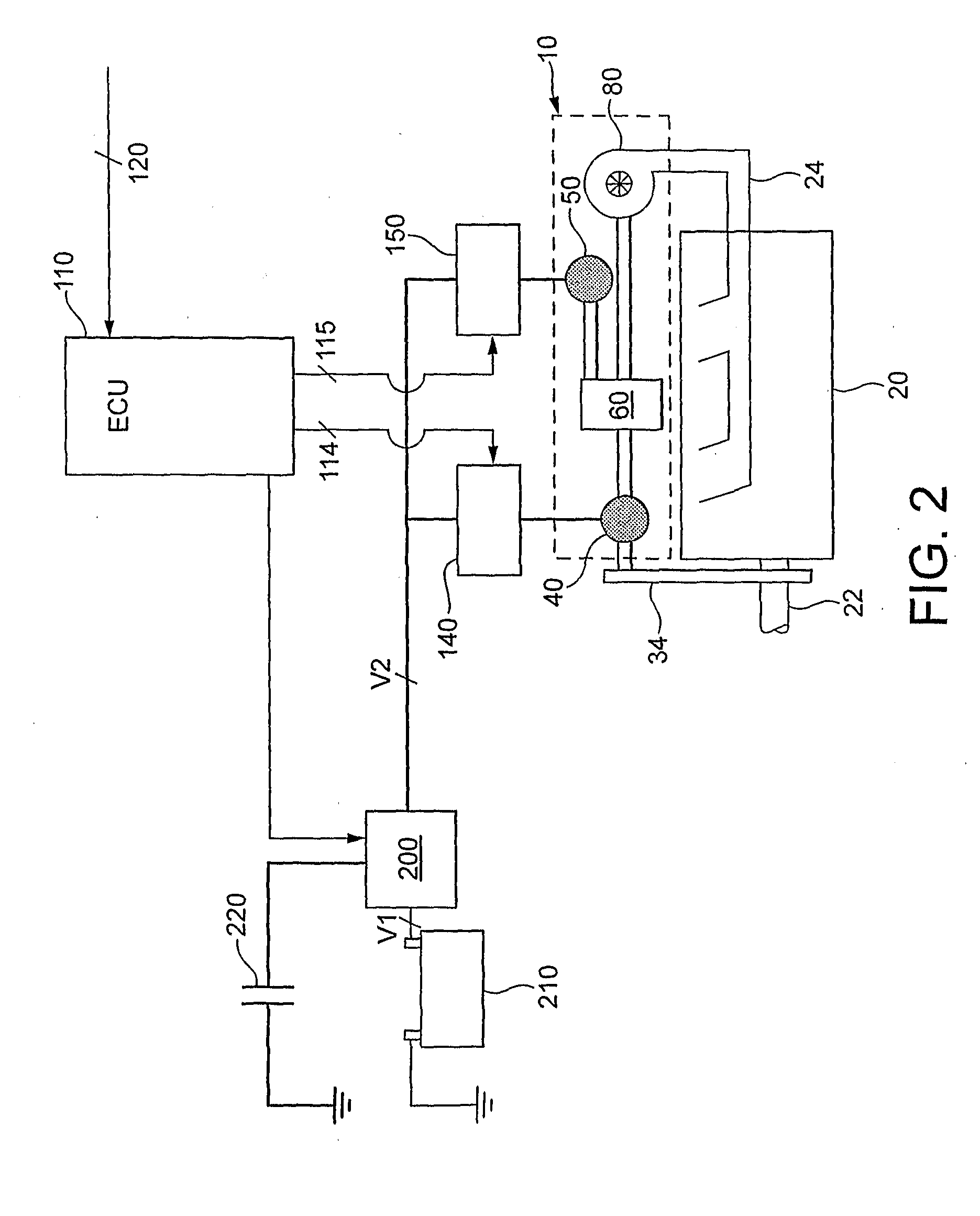Method of operating a supercharger
a supercharger and supercharger technology, applied in the direction of batteries/cells, machines/engines, transportation and packaging, etc., can solve the problems of more expensive manufacturing, and less efficient operation of larger engines, and achieve the effect of constant speed
- Summary
- Abstract
- Description
- Claims
- Application Information
AI Technical Summary
Benefits of technology
Problems solved by technology
Method used
Image
Examples
second embodiment
[0074]In this invention, the method may additionally provide for a mode of operation in which the first motor-generator 40 is operated as a motor to assist the engine 20 when the engine is idling, such that the engine can be idled at a speed lower than what would otherwise be its idling speed, thereby saving fuel.
third embodiment
[0075]In third embodiment, the method may additionally stop the engine 20 when the vehicle comes to a rest and then start the engine again before accelerating from rest. This may be achieved by operating the first motor-generator 40 as a motor to start the engine and as a generator to stop the engine.
[0076]In a third embodiment, the method may include a mode of operation in which the first motor-generator 40 is operated as a generator to slow the engine 20 and hence the vehicle under braking. The method may enter this mode of operation upon the ECU receiving an input indicative of a brake pedal of the vehicle being depressed. When operated as a generator in this way, the first motor-generator 40 may be used to recharge the battery 210 and also the capacitor 220. Thus, this mode of operation may be considered as a regenerative-braking mode.
fifth embodiment
[0077]In a fifth embodiment, it is envisaged that the ECU 110 be further arranged such that control of the supercharger in accordance with the method is integrated into both a torque control path and a charge control path of the ECU 110. It will be appreciated that existing engine management systems that employ Engine Control Units include a torque control path and a charge control path. This integration would allow the first motor-generator 40 to be used selectively to contribute to or oppose engine torque. Thus, the first motor-generator 40 may be used to make torque “interventions” in the output of the engine 20. In this way, and with appropriate feedback, closed-loop engine torque control can be provided. Similarly, integrating control of the supercharger 10 into the charge control path can be used to deliver closed-loop boost pressure control.
[0078]Integration of control of the supercharger into the charge control path may be used to control the air massflow and / or boost pressu...
PUM
 Login to View More
Login to View More Abstract
Description
Claims
Application Information
 Login to View More
Login to View More - R&D
- Intellectual Property
- Life Sciences
- Materials
- Tech Scout
- Unparalleled Data Quality
- Higher Quality Content
- 60% Fewer Hallucinations
Browse by: Latest US Patents, China's latest patents, Technical Efficacy Thesaurus, Application Domain, Technology Topic, Popular Technical Reports.
© 2025 PatSnap. All rights reserved.Legal|Privacy policy|Modern Slavery Act Transparency Statement|Sitemap|About US| Contact US: help@patsnap.com



